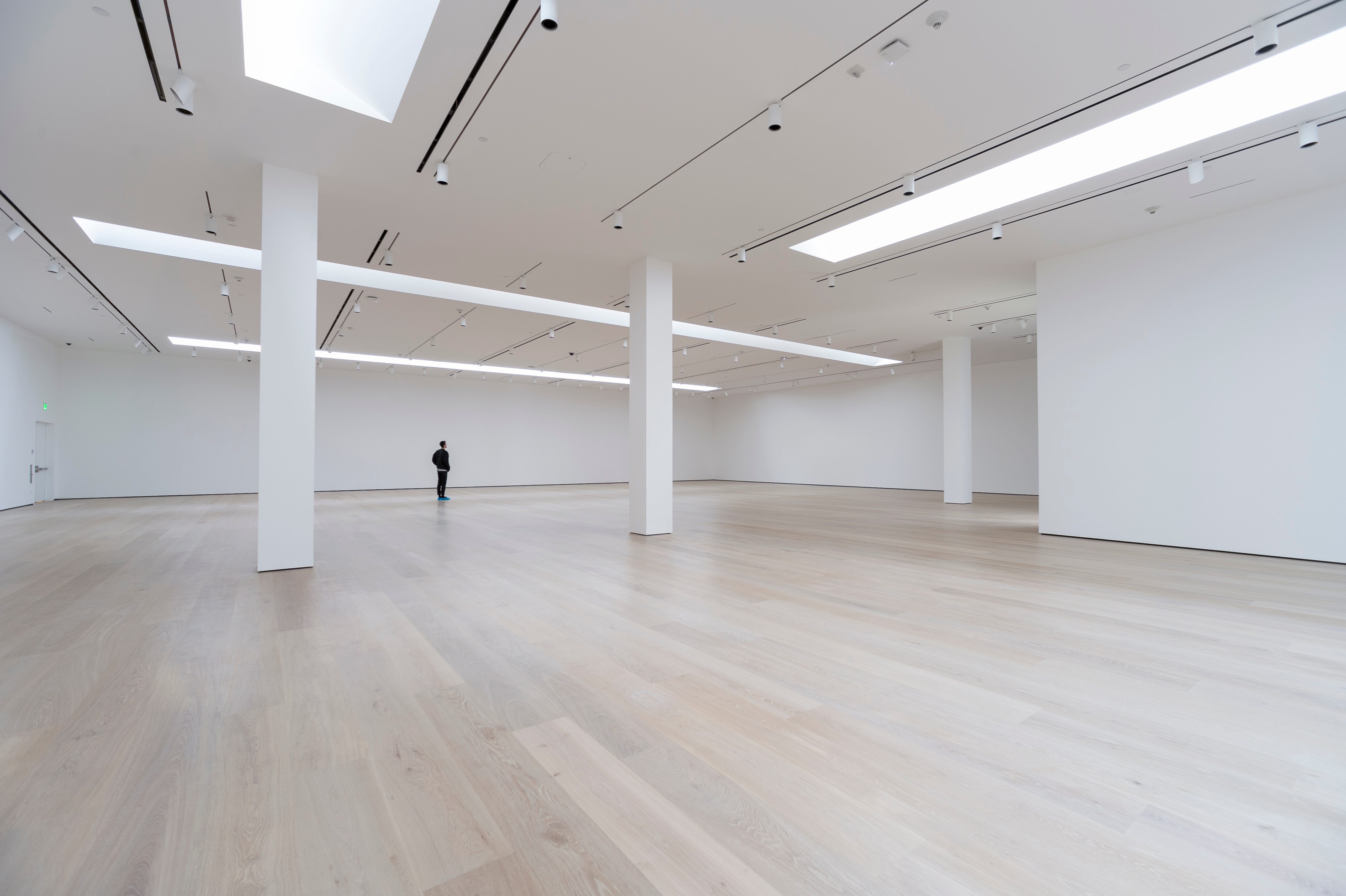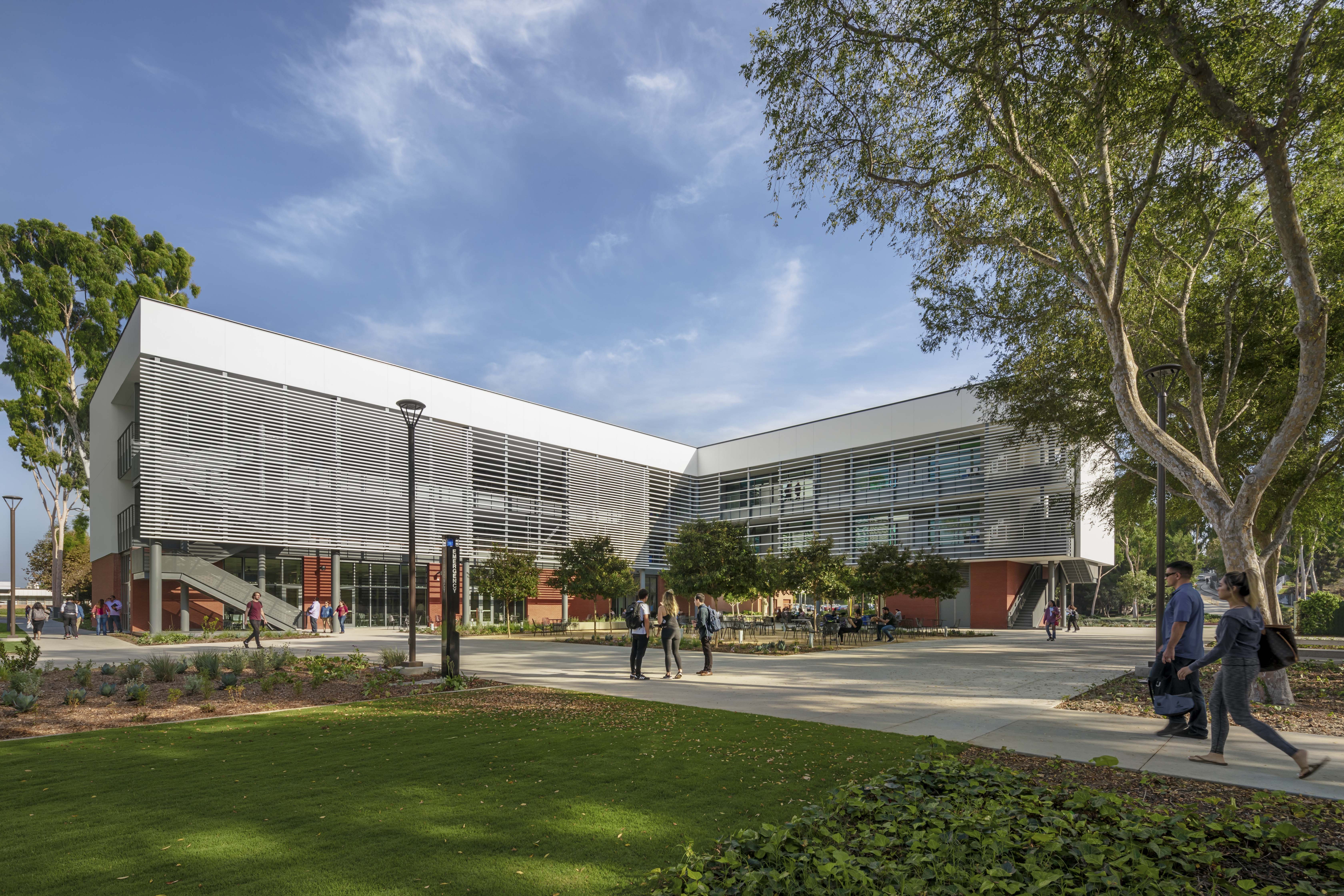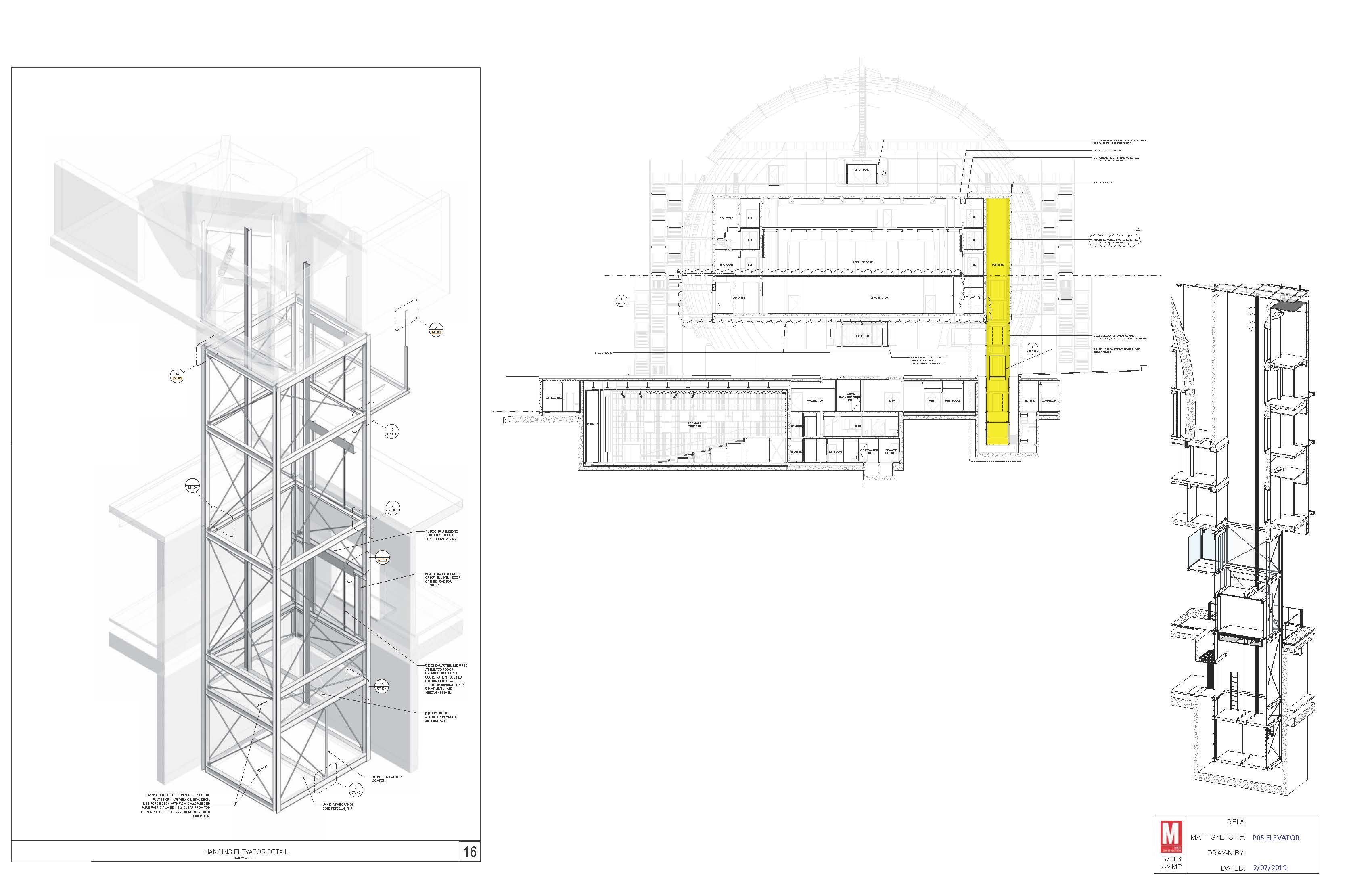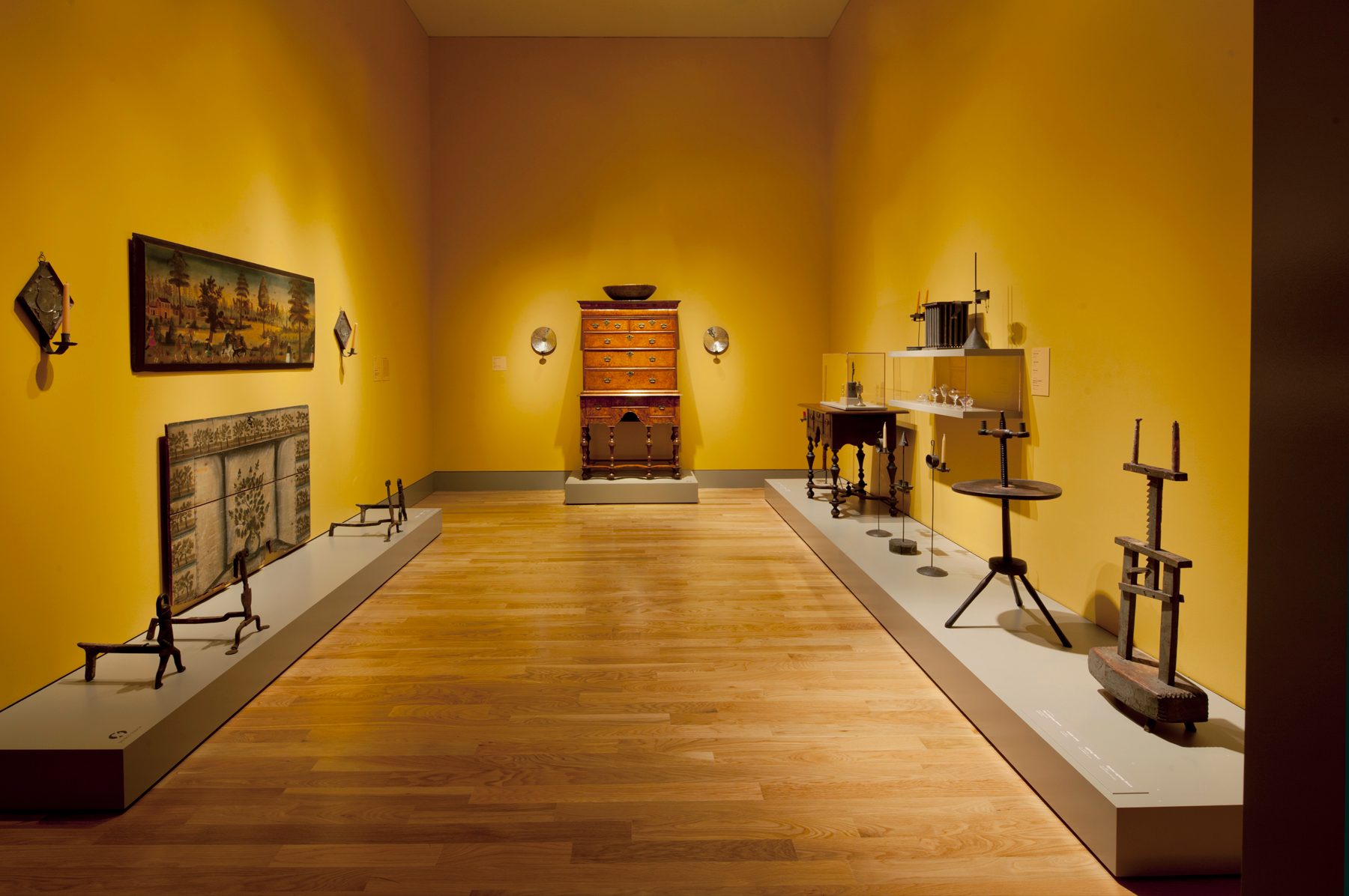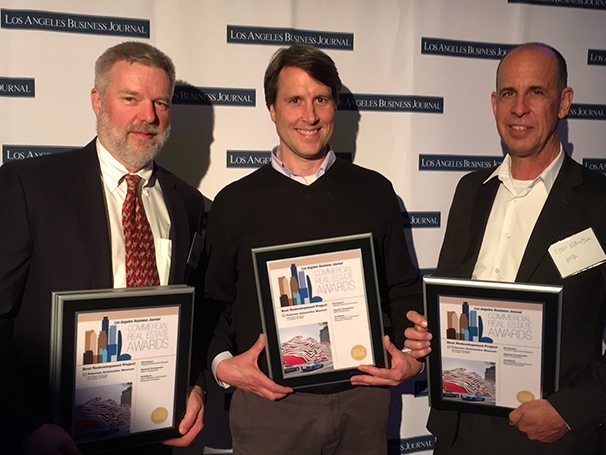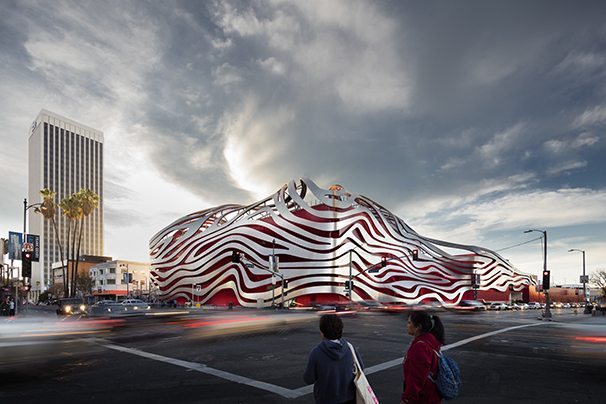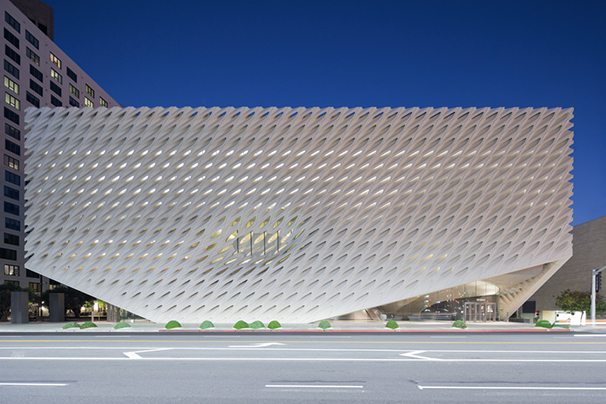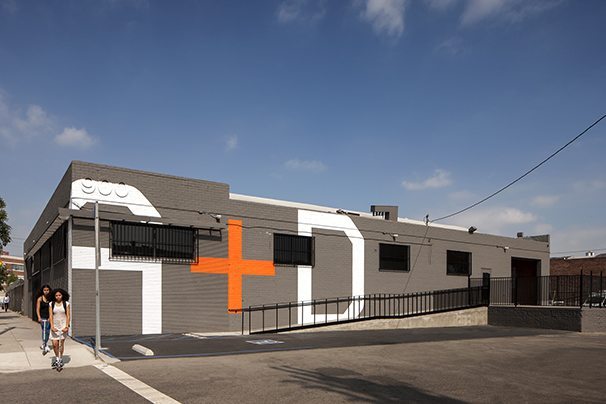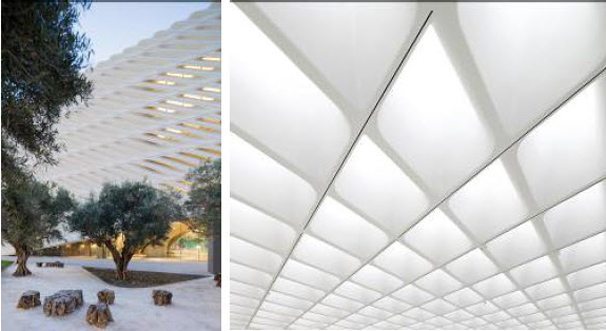
The Broad plaza, photo by Iwan Baan; The Broad’s third-floor skylights, photo by Hufton + Crow
Location
Los Angeles, CA
Owner
The Broad Art Foundation
Design Architect
Diller Scofidio + Renfro
Architect
Gensler
Construction Manager / Owner's Rep
Robert P. Goodwin Consulting, Inc.
Project Size
114,000 SF
ViewThe Broad Achieves LEED Gold Certification, Recognized for Sustainable Design and Practices
LOS ANGELES, April 19, 2016—The U.S. Green Building Council has awarded The Broad a LEED (Leadership in Energy and Environmental Design) Gold certification for LEED New Construction, the museum announced today. The achievement recognizes The Broad’s energy-saving design features and continuing commitment to sustainable practices. Los Angeles’ new contemporary art museum, designed by Diller Scofidio + Renfro in collaboration with Gensler, and built by MATT Construction, is the first major art museum in Los Angeles and one of only a handful of museums nationwide to achieve LEED Gold status. The Broad’s environmentally friendly features include electric car charging stations, bike parking spaces, rooftop drains routed to street level gardens that filter runoff and high-efficiency plumbing fixtures that help reduce indoor water use by 40 percent. In addition, with easy walking access to residential and commercial buildings, restaurants and other cultural amenities and close proximity to public transit and adjacency to the new Metro Regional Connector station at the corner of 2nd and Hope streets (anticipated opening: 2021), The Broad aims to be in the top tier of eco-conscious, efficient and sustainable museums. “We are honored to be recognized for a commitment to sustainable practices, while ensuring the highest-quality environmental conditions for our art and an enjoyable viewing experience for our visitors,” said Joanne Heyler, founding director of The Broad. “We were very deliberate during the design and construction process in incorporating sustainable elements into the building. We do everything from recycling brochures to using environmentally smart LED lights in all of our public spaces.” The Broad opened in downtown Los Angeles in September 2015. The 120,000-square-foot, three-story building includes 21,000-square-feet of collection storage and 50,000 square feet of gallery space, and sits atop a three-story parking garage. The Broad worked with Diller Scofidio + Renfro, Gensler and MATT Construction throughout the design and build process on comprehensive sustainability initiatives, including:
Use of daylighting
o The Broad’s 35,000-square-foot third-floor gallery space was designed to provide ample lighting without using any electric light during most days of the year.
o Protecting artwork from damaging light while also drawing natural light into the building to create ideal viewing conditions for that art is central to the building’s design. The entire structure, including the carefully calibrated veil structure and skylights, serves as a light filtration device, bringing indirect, filtered natural light into the galleries in a controlled way.
o The third-floor gallery skylights are digitally monitored to control the amount of northern light that is allowed in at any time. In addition, each skylight is fitted with blackout shades to enable the museum to eliminate natural light when needed. One of the world’s leading day-lighting engineers, Andy Sedgwick of Arup in London, oversaw the development and execution of the veil and skylights.
o The addition of daylight in the building makes for a healthier and more comfortable environment for the museum’s employees and visitors.
Energy reduction and clean energy
o The use of more efficient heating, cooling and lighting systems yields the museum an estimated 18% energy savings annually.
o Additionally, The Broad offset a portion of its electricity consumption through the purchase of a two year renewable energy credit (REC), which not only promotes further development of renewable energy facilities but also reduces the museum’s nonrenewable electricity production.
o The Broad shares a centralized chilled water plant serving multiple properties downtown, increasing efficiency, reducing energy consumption and limiting the amount of heat that is introduced into the atmosphere.
Energy efficient lighting and LEDs
o The third-floor gallery skylights are outfitted with exterior sensors that monitor the amount of diffused sunlight coming into the galleries. The LED lights in the galleries slowly turn on when sunlight levels drop below a certain level, allowing for the galleries to be lit solely by diffuse natural light during a majority of daylight hours.
o The custom LED wallwasher and spotlight fixtures created with Litelab all produce light with very low UV content and are automatically controlled to turn off when the museum is closed.
o Though halogen lights were considered for both ceiling heights and cost (LED lights cost about three times the amount of halogen lights), The Broad opted to use LED lights so the museum would utilize an environmentally conscious and beautiful lighting system while reducing energy usage and greenhouse gas emissions.
Attention to alternative transportation
o The parking garage includes 10 electric vehicle charging stations and covered bike parking, with additional spaces and racks added to accommodate increased demand after the museum opened.
o With a central location in downtown Los Angeles, The Broad is within easy walking distance of numerous locations and encourages visitors to reduce the use of automobiles and greenhouse gas emissions, aligning with Los Angeles’ Climate Action Plan.
o The Broad is easily accessible by public metro and bus transit and is adjacent to the new Metro Regional Connector station at the corner of 2nd and Hope streets (anticipated opening: 2021), which will improve access to both local and regional destinations by providing continuous through service between the Gold, Blue, Expo, Red and Purple Lines, and providing connectors to other rail lines via the 7th Street/Metro Center Station.
o The museum offers employees free Metro Tap cards as incentive to take alternate transportation to work. o Pedestrian traffic flow along Grand Avenue was improved with the addition of The Broad’s public plaza, two large stairways that provide access from Hope Street to Upper Grand, and the construction of a new crosswalk across Grand Avenue, all of which creates a walkable link from the Metro Regional Connector station through the plaza and across to the many cultural resources and institutions along Grand Avenue.
Construction material use, reuse and recycling
o Insulated glass panels are used throughout the building.
o During construction, MATT Construction diverted over 80 percent of the onsite generated construction waste from landfills.
o 20 percent of materials used onsite were made of recycled content, including the concrete fly ash.
Addition of a green space with biofiltration for stormwater runoff
o The public plaza adds another critical green space to downtown Los Angeles, offsetting the heat island effect and providing a shared space for multiple public purposes, including enjoyment and picnicking by museum visitors and programming offered by The Broad throughout the year.
o The plaza lawn and the associated rainwater system serve as the SUSMP (standard urban stormwater mitigation plan), an essential biofiltration system for stormwater runoff from the plaza hardscape and restaurant roof.
o With the plaza, the crosswalk and the streetscape improvements along Grand Avenue, 2nd Street and Hope Street, The Broad has added over 20 trees, including 14 100-year-old Barouni olive trees, to the area.
Water reuse and efficiency
o The museum’s high-efficiency plumbing fixtures reduce indoor water use by 40 percent.
Other
o Visitors are provided the option to recycle printed brochures at the end of their visit.
o Onsite showers are provided for employees who commute via alternate transportation.
About The Broad
The Broad is a new contemporary art museum founded by philanthropists Eli and Edythe Broad on Grand Avenue in downtown Los Angeles. The museum is designed by Diller Scofidio + Renfro in collaboration with Gensler and offers free general admission. The museum is home to the 2,000 works of art in the Broad collection, which is among the most prominent holdings of postwar and contemporary art worldwide. With its innovative “veil-and-vault” concept, the 120,000-square-foot, $140-million building features two floors of gallery space to showcase The Broad’s comprehensive collection and is the headquarters of The Broad Art Foundation’s worldwide lending library. www.thebroad.org


